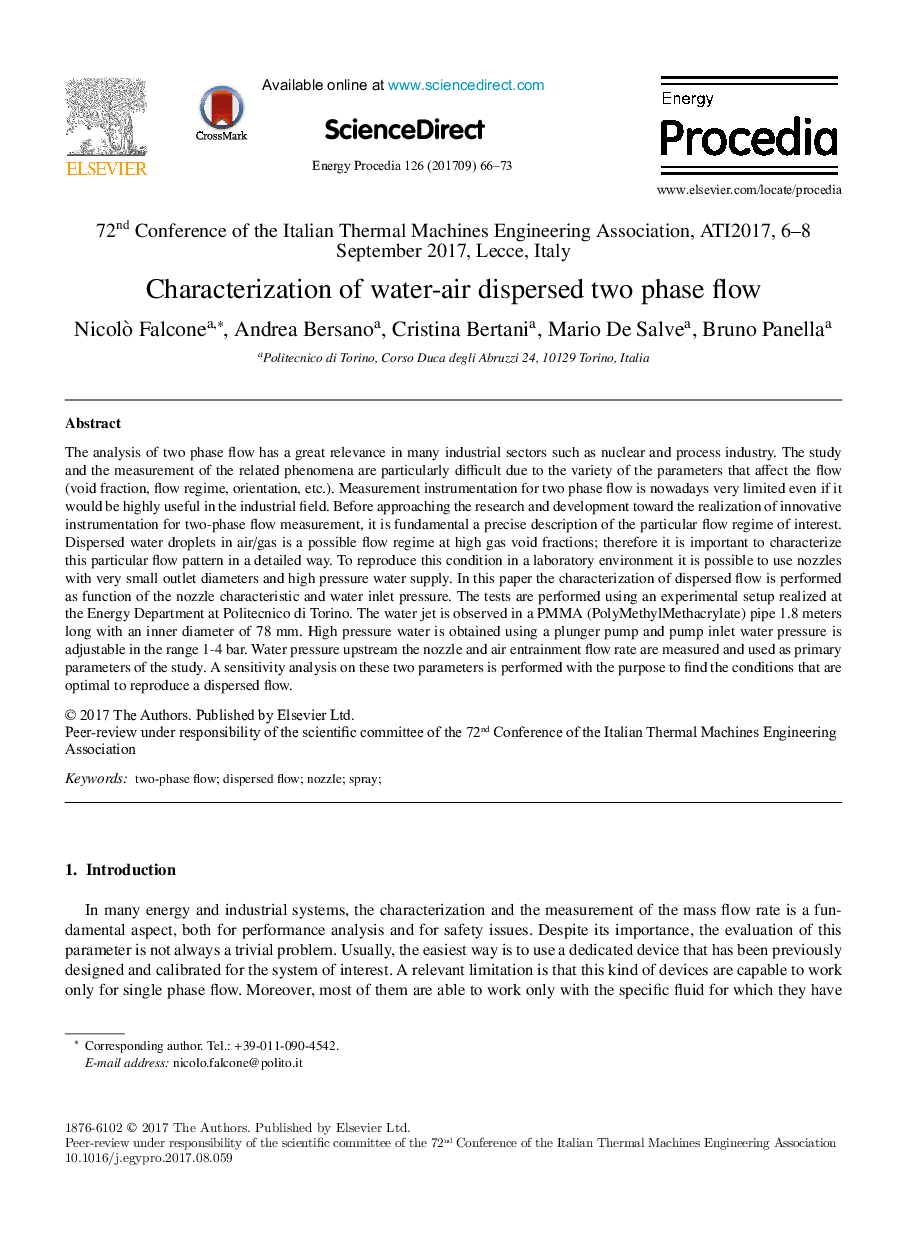| Article ID | Journal | Published Year | Pages | File Type |
|---|---|---|---|---|
| 5444438 | Energy Procedia | 2017 | 8 Pages |
Abstract
The analysis of two phase flow has a great relevance in many industrial sectors such as nuclear and process industry. The study and the measurement of the related phenomena are particularly difficult due to the variety of the parameters that affect the flow (void fraction, flow regime, orientation, etc.). Measurement instrumentation for two phase flow is nowadays very limited even if it would be highly useful in the industrial field. Before approaching the research and development toward the realization of innovative instrumentation for two-phase flow measurement, it is fundamental a precise description of the particular flow regime of interest. Dispersed water droplets in air/gas is a possible flow regime at high gas void fractions; therefore it is important to characterize this particular flow pattern in a detailed way. To reproduce this condition in a laboratory environment it is possible to use nozzles with very small outlet diameters and high pressure water supply. In this paper the characterization of dispersed flow is performed as function of the nozzle characteristic and water inlet pressure. The tests are performed using an experimental setup realized at the Energy Department at Politecnico di Torino. The water jet is observed in a PMMA (PolyMethylMethacrylate) pipe 1.8 meters long with an inner diameter of 78 mm. High pressure water is obtained using a plunger pump and pump inlet water pressure is adjustable in the range 1-4 bar. Water pressure upstream the nozzle and air entrainment flow rate are measured and used as primary parameters of the study. A sensitivity analysis on these two parameters is performed with the purpose to find the conditions that are optimal to reproduce a dispersed flow.
Related Topics
Physical Sciences and Engineering
Energy
Energy (General)
Authors
Nicolò Falcone, Andrea Bersano, Cristina Bertani, Mario De Salve, Bruno Panella,
